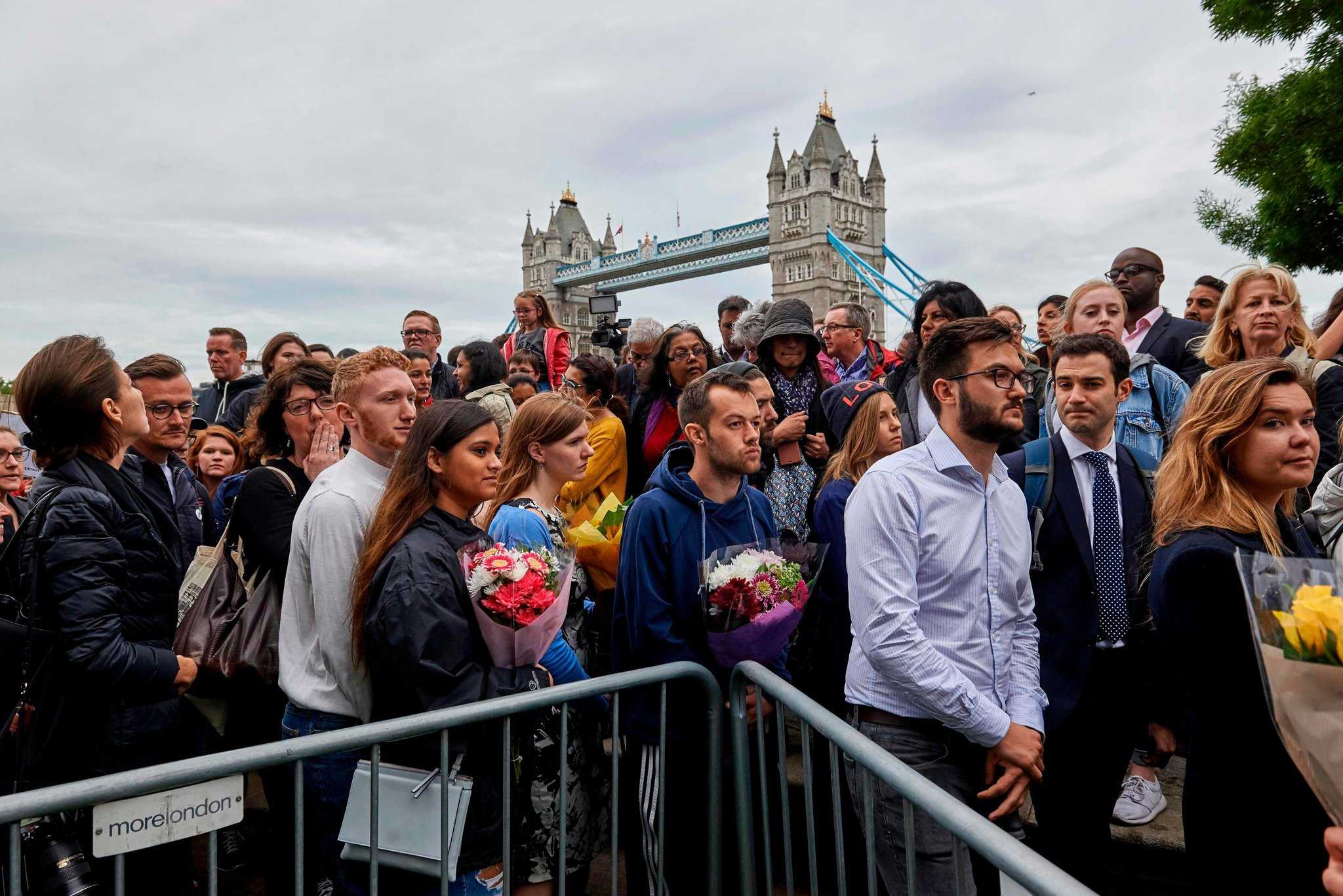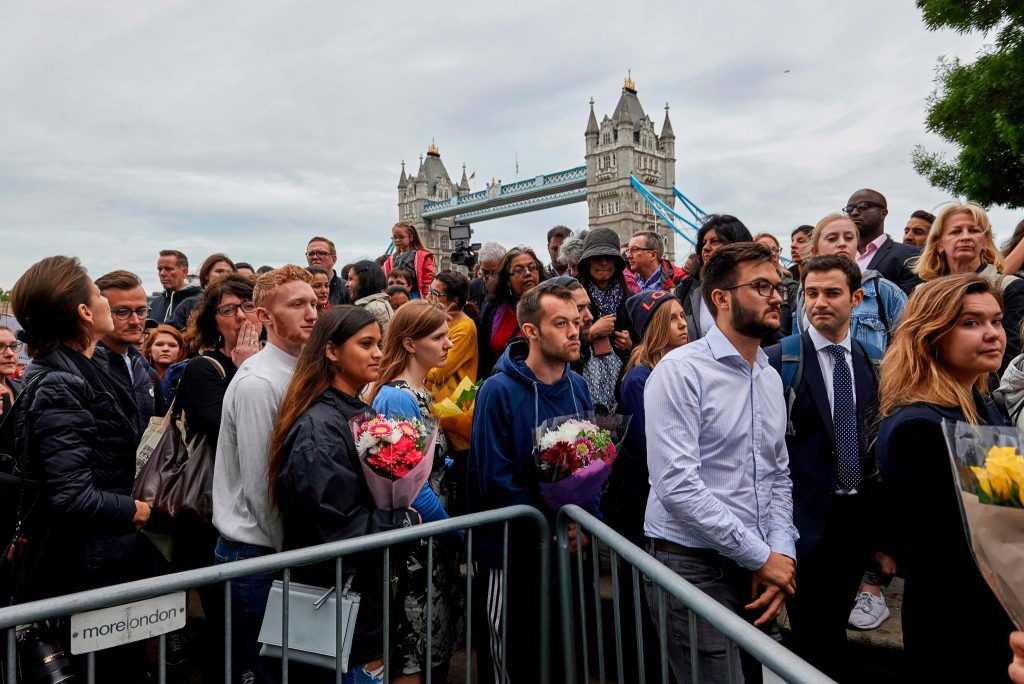
LONDON — For the fourth time in 12 weeks I marked myself safe on Facebook. In Britain.
It was Wednesday morning, and Londoners had reason to be a bit optimistic.
Borough Market, a lively bar and restaurant district near the Thames, was reopening, less than two weeks after terrorists dressed in fake suicide bombs went on a stabbing rampage.
The attacks came a week after a suicide bomber blew himself up at a pop concert in Manchester, and two months after a terrorist rammed his car into pedestrians on Westminster Bridge before stabbing a policeman outside Parliament. Altogether, 34 people died.
London was ready for a break. Instead, the city awoke on Wednesday to black smoke spiraling into the morning sky as fire raged through Grenfell Tower, a 27-story apartment building, killing at least 17 and injuring dozens more. The fire was not an act of terrorism, though when images first appeared on social media, some people worried it was. The sight of a burning tower and accounts of people jumping from windows inevitably conjured reminders of the Sept. 11 attacks.
LONDON — For the fourth time in 12 weeks I marked myself safe on Facebook. In Britain.
It was Wednesday morning, and Londoners had reason to be a bit optimistic.
Borough Market, a lively bar and restaurant district near the Thames, was reopening, less than two weeks after terrorists dressed in fake suicide bombs went on a stabbing rampage. The attacks came a week after a suicide bomber blew himself up at a pop concert in Manchester, and two months after a terrorist rammed his car into pedestrians on Westminster Bridge before stabbing a policeman outside Parliament. Altogether, 34 people died.
London was ready for a break. Instead, the city awoke on Wednesday to black smoke spiraling into the morning sky as fire raged through Grenfell Tower, a 27-story apartment building, killing at least 17 and injuring dozens more. The fire was not an act of terrorism, though when images first appeared on social media, some people worried it was. The sight of a burning tower and accounts of people jumping from windows inevitably conjured reminders of the Sept. 11 attacks.
Once again, my phone buzzed with frantic messages, not just from editors, but from anxious family and friends abroad: “Are you O.K.??”
London is O.K. (just ask a Londoner) and mostly feels normal. Mostly. Police with machine guns patrol train stations. There are steel and concrete barriers lining major bridges now to protect pedestrians. When I bike to work, across Waterloo Bridge, I find myself planning my escape if a car comes charging. My children’s school sent out a note, saying it was reviewing planned class trips into central London and will “be avoiding travel on the underground and public transport.”
I found myself wondering: Is this what they call the new normal?
It is not so much that Londoners are changing their lives in response to terrorism. It is more that terrorism has become part of life in London. Nervous glances passing between passengers on a subway car when the train gets stuck in the tunnel for a little too long — and relieved smiles when it starts moving again. A group of students outside a south London high school joking that the latest variation on “the dog ate my homework” is “sorry, miss, I was caught up in a terrorist attack.” One of my neighbors recounting how the loud “bang” of a blown exhaust pipe had given him a fright earlier this week. “I thought it was them terrorists again,” he said and chuckled at himself.
Many here know someone who knows someone who could have been caught up in an attack. One friend of mine, a civil servant, was crossing Westminster Bridge just minutes before the March attacker ran over pedestrians at 70 miles an hour. Another friend runs a stall in Borough Market but had already closed for the day when the attack happened. “I thought food was sacrosanct,” she texted.

You start thinking that way when no attacks happen for several years. London lived with terror at the hands of the Irish Republican Army for decades. It suffered the 7/7 attacks in 2005, when four coordinated suicide bombs killed 52 people in the morning rush hour. In 2013, a British soldier was slaughtered on a London street in plain daylight. But since then, as Paris and Brussels and Berlin were hit, London seemed apart from the violence.
Last weekend, in response to the latest attack, the mayor of London, Sadiq Khan, basically urged Londoners to go out and party — to show off “how we pull together in the face of adversity.”
My friend Nadja Stokes, who runs Gourmet Goats in Borough Market, told me the market was practically mobbed by visitors who wanted to show their supprt when it reopened Wednesday. “London is a big city,” she said. “But in the end we’re a community.”
Perhaps the best summary of the mood was a fake Underground sign that went viral after the Westminster bridge attack in March: “All terrorists are politely reminded that THIS IS LONDON and whatever you do to us we will drink tea and jolly well carry on thank you.” Made to look as if it had been written by subway staff and displayed in a London subway station, the image had actually been generated online. But no matter; it was shared by thousands, quoted by the prime minister and on the BBC’s flagship “Today” program as capturing the London spirit.

Two attacks later, when The New York Times printed a headline referring to Britain as “reeling,” there was an outcry, too: Under the hashtag #ThingsThatLeaveBritainReeling Londoners listed everything from microwaved tea and incompetent queuing to noisy American tourists — everything except terrorism.
To a nonnative Londoner (I am German, married to a Welshman who, for the record, was also appalled at that headline) there is something admirable in this reflexive British spirit of not being cowed and pushing back against any notion that the country is “reeling,” even if it can seem a bit defensive. Many people do admit to a degree of uneasiness.
Gustavo Lou, a 21-year-old student from West London, said he tried to avoid taking trains these days. “If I do, I get on the front or back,” he said.
Londoners of a different generation often call upon the city’s history as proof of local resilience, from the Blitz — the German bombardments during World War II — to the terrorist campaign by the I.R.A. in the 1970s, ’80s and into the ’90s.

Mick Bailey, a 63-year-old taxi driver from north London, grew up with “lots of amusing stories about the blackouts and bombing raids” during the war. Once, his mother came out of the shelter to find the family home bombed to pieces. “So they moved in with other family,” he said. “Everyone just got on with it.”
In 1983, when an I.R.A. car bomb exploded outside Harrods department store at the height of the Christmas shopping season, Mr. Bailey was working as a firefighter. During the recent attacks at Borough Market, he was out driving his cab. “It feels much as it did during the I.R.A. days,” Mr. Bailey said. “It happened and people were thankful that they weren’t involved. And they carried on.”
He worries about his son, who is a policeman in London. But he is determined not to change his life, “because if you do,” he said, “then it controls you, and you can’t let that happen.”
The thing that worries Mr. Bailey the most is that attacks carried out in the name of Islam are exploited by populists.

“I live in a very mixed area, I work around Muslims,” Mr. Bailey said. “We do have to make sure that we don’t point the finger in the wrong direction.”
“London is a very special place,” he said. “All these people from all over.”
That made me think of something Richard Thompson, a former MI6 official, told me. “Terrorism is not an enduring strategic threat to this country,” he said. Wednesday’s fire could well have killed more people than all three attacks combined, he said, warning against loss of perspective and knee-jerk reactions.
Perhaps the earliest recorded terrorist plot in London was the so-called Gunpowder Plot in 1605, when a pro-Catholic conspiracy tried to assassinate King James and blow up Parliament with 36 barrels of gunpowder. The plot was foiled and Guy Fawkes, who had been guarding the barrels under the palace of Westminster, was hanged, drawn and quartered.
To this day, Londoners celebrate Guy Fawkes Day every Nov. 5 with fireworks. It is one of the biggest family outings of the year. As John Robin, a history teacher in East London, said, beaming: “What better way to deal with terrorism?”
We’re interested in your feedback on this page. Tell us what you think.




























